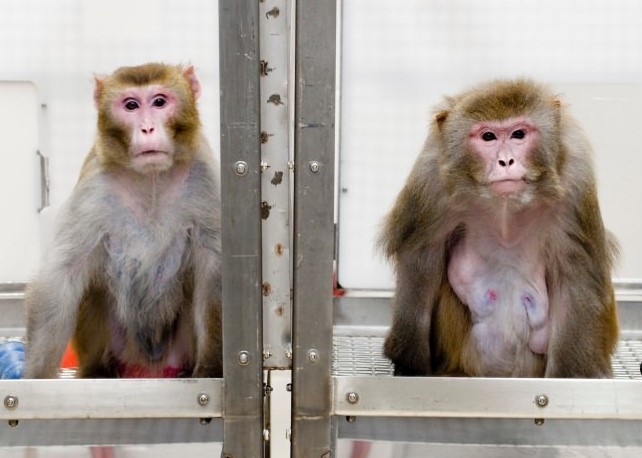Can We Live to 120 on the Fasting Mimicking Diet or Calorie Restriction?
Summary: The Fasting Mimicking Diet, also called the Valter Longo diet, and the practice of calorie restriction are the twin subjects of two recent research reports which show that the two fasting regimens offer potential health benefits. [This article first appeared on the website LongevityFacts.com and was updated March 22, 2018. Author: Brady Hartman. ]
The idea that animals can live longer, healthier lives by drastically reducing their calorie intake is not exactly new. Scientists have repeatedly demonstrated the life-extending value of calorie restriction (CR) in animals from worms to monkeys—with the implication that the same might be true for humans.
In fact, geroscientists consider CR as one of the most effective ways to extend lifespan. Our metabolism slows down as we age, due to a phenomenon called deregulated nutrient sensing. This metabolic change contributes to a host of age-related diseases.
In practice though, permanently reducing calorie intake by nearly a third sounds like a way to extend life by making it not worth living. Researchers have also warned that what works for worms or rats may not work in humans. Calorie restriction, some worry, could even prove dangerous to people, by causing muscle or bone density loss, for example.
Despite its health benefits, prolonged calorie restriction is difficult for people to maintain. The Fasting Mimicking Diet (FMD) is a variant of calorie restriction. Think of it as CR on the installment plan. The FMD provides many of the benefits of calorie restriction, with less suffering and potential health problems.
But do either of these forms of calorie restriction work?
Two recent studies shed new light on the subject. One study on calorie restriction and the other on the Fasting Mimicking Diet. These studies bring calorie restriction from the realm of wishful thinking to the brink of reality.

What Is Calorie Restriction?
Calorie restriction (CR) is the practice of drastically slashing calorie intake to improve health and retard aging. While it sounds unpleasant, a growing body of research suggests the practice fights disease and adds years to a person’s life. There are many kinds of CR including intermittent fasting, alternate day fasting, fasting mimicking diet and, of course, prolonged calorie restriction.
Practitioners define classic calorie restriction as a 20% to 40% reduction in calories. Calorie restriction includes consuming sufficient quantities of vitamins, minerals, and other necessary nutrients, typically with a vitamin supplement. A typical diet consists of 2000 daily calories for women and 2500 for men. In contrast, practitioners of CR consume between 1500 and 1800 calories a day, respectively.
Devotees of Calorie Restriction
As spartan as the practice sounds, CR does have its followers. Brian Delaney, president of CR Society International, an organization of calorie restriction practitioners, says the society membership is about “a few thousand.” Members of the CR Society defend the practice, reminding the world that calorie restriction is the only known dietary measure that increases lifespan in laboratory animals. Longevity researchers laud CR as
“the only intervention that has consistently been shown to slow primary aging.”
While CR works reliably to extend the lifespan of laboratory animals, until recently, scientists were unclear about its effectiveness in humans.

Does Calorie Restriction Extend Human Lifespan?
The only way to determine whether CR extends the life of humans is to conduct studies on people. People live a long time, about 80 years on average and 120 years max. Because no one researcher wants to wait that long, the human calorie restriction trials have been short-lived. These trials such as the CALERIE study showed that calorie restriction lowers cholesterol, insulin, fasting glucose, inflammatory markers and blood pressure, among other things.
Our closest genetic match is the rhesus monkey with a maximum lifespan of 40 years. Rhesus monkeys are an ideal test subject for CR, as they are a primate with human-like aging patterns. Rhesus monkeys age like humans, they develop gray and thinning hair, diabetes, cancer, and become frail with age. Researchers use rhesus monkeys as a surrogate to test long-term calorie restriction.
Calorie Restriction Using Rhesus Monkeys
In remarkable collaboration, the authors of two competing teams settled their differences and jointly published a new report in the journal Nature Communications, showing that calorie restriction extends lifespan in rhesus monkeys.
The joint team of researchers from the University of Wisconsin–Madison and the National Institute on Aging reported their remarkable findings stating
“CR mechanisms are likely translatable to human health.”
Up until recently, the two teams had run separate experiments studying the health effects of calorie restriction in Rhesus monkeys. The teams reported conflicting results. The Wisconsin National Primate Research Center research team (UW) showed that calorie restricted primates lived longer than those fed a normal diet and the National Institute on Aging (NIA) team found that they do not.
In captivity, Rhesus monkeys live to the average age of 26. The UW monkeys lived two years longer on a 30% calorie restricted diet than the normally fed ones. In fact, 26% of the calorie-restricted monkeys died in comparison to 63% of the controls who died fat and happy.
In contrast, the NIA team had different results and showed that CR did not affect the monkey’s lifespan.
Giving the puzzling contradiction, the researchers from UW and NIA collaborated and pooled their results. They found that calorie restriction extends lifespan and delays the onset of age-related diseases such as diabetes, cancer and heart disease. The joint team also found that calorie restriction was more effective at extending the lifespan of adult and middle-aged monkeys. The combined team also noticed that a healthier diet consisting of whole grains and less sugar and fat was nearly as effective as calorie restriction in extending lifespan and improving health. Jointly, the researchers concluded that
“Taken together, data from both UW and NIA studies support the concept that lower food intake [CR or FMD] in adult or advanced age is associated with improved survival in nonhuman primates. “
Valter Longo Weighs In
Although not involved in the UW and NIA studies, Valter Longo is a leading expert on diet and its effects on longevity. Dr. Longo knows a thing or two about fasting; he is the lead author of the second study on the Fasting Mimicking Diet. Dr. Longo currently resides at the Longevity Institute and Leonard Davis School of Gerontology, University of Southern California.
According to a recent review published by Longo and colleagues, the most important difference between the UW and NIA studies was the quality and composition of the diet. The authors wrote:
“The UW diet was composed of 10% fat (primarily from corn oil), 5% cellulose, and 28.5% sucrose.“ In contrast, the NIA diet consisted of “natural ingredients” creating a “high-fiber diet derived from wheat, corn, soybean, fish, and alfalfa meal” with “the addition of 5% fat, 5% crude fiber, and only 3.9% sucrose.”
Additionally, at UW, the control group monkeys were fed as much as they wanted, while the control group NIA monkeys were portion controlled. So, the NIA monkeys had a much healthier diet than the UW monkeys.
Vongo’s conclusion: in UW, they used a much less healthy diet for the control animals, and this made the calorie-restricted monkeys look healthier, by comparison.

What Is the Fasting Mimicking Diet?
The Fasting Mimicking Diet is the creation of Valter Longo, giving the diet the nickname ‘Valter Longo Diet Plan.’ Longo is also the lead author on a second study published earlier this year in the journal Science Translational Medicine. Longo’s research suggests it is possible to gain the benefits of CR without signing up for a lifetime of hunger. Instead of prolonged calorie restriction, Longo advocates a Fasting Mimicking Diet (FMD). Longo says that the FMD is
“safe, feasible and effective in reducing risk factors for aging and age-related diseases.”
Valter Longo explains the underlying theory of the on-again/off-again approach, saying that the regenerative effects of the FMD aren’t due to the fasting itself, but occur as a result of the recovery afterward. By contrast, long-term, uninterrupted CR can lead to adverse health effects seen in extreme conditions like anorexia.
How the Fasting Mimicking Diet Works
In the Fasting Mimicking Diet, dieters practice calorie restriction for only five days a month. They repeat the process for three months and from then on as needed. The calorie restriction in Valter Longo’s study was 100 percent plant-based. The diet featured vegetable soups, energy drinks, energy bars, and a chip snack. The participants also took vitamin and mineral supplements. Longo explains that the Fasting Mimicking Diet includes nutrients designed to manipulate the expression of genes involved in aging-related processes.
Longo’s test subjects followed a carefully designed diet. The FMD prescribes a 50% reduction on the first day (about 1,100 calories) and 70 percent reduction (about 700 calories) over the next four days. The participants ate whatever they wanted for the rest of the month.
Valter Longo is a partial owner of L-Nutra, a company that manufactures the Fasting Mimicking Diet. For those worried about funding bias swaying the results, Longo says he takes no salary or consulting fees from L-Nutra. In fact, Longo has assigned his shares to a nonprofit organization established to support further research.

The Valter Longo Diet Plan (FMD) Is Hard To Do
Valter Longo tested the FMD on nineteen people, with nineteen others as controls. The participants were from 19 to 75 years of age, from both sexes and most races, to represent a general cross-section of the adult population.
Longo found that even the five-day-a-month calorie restriction regimen was a struggle for some test subjects. One-fourth of the subjects dropped out.
The results were favorable. Longo and his team saw that the subjects on the fasting diet lost weight and had improved levels of triglycerides, cholesterol, and glucose, along with other factors. The people in the Fasting Mimicking Diet group lost about 3% of their body weight, along with a reduction in visceral fat. FMD rejuvenated their immune systems, as the test subjects experienced a reduction in C-reactive protein, a marker of systemic inflammation.
These health improvements showed up after the third month and persisted for at least three months—even after the FMD participants had returned full-time to a regular diet. Notably, lean muscle mass remained unchanged. Most people reported only mild or no negative effects while fasting.
Longo saw greater health benefits for people who were obese or otherwise unhealthy. Longo added that those people might also need to repeat the five-day Fasting Mimicking Diet regimen as often as once a month until they become healthy. In contrast, individuals who are already healthy might repeat it just twice a year.
Disagreement Over the Benefits of CR and FMD
Some researchers find the calorie restriction and Fasting Mimicking Diet arguments unpersuasive. Scientific American interviewed several gerontology researchers who were not involved in the USC, NIA or UW studies. These experts and offer a different point of view on the subject.
Consider the opinion of Leslie Robert, a physician, and biochemist at the University of Paris. As first reported in Scientific American, the researcher said that pharmaceutical approaches to life-extension offer greater potential than “inefficient and apparently harmful” diets, such as CR and FMD.
Dr. Robert is referring to the use of anti-aging drugs, like metformin and rapamycin. Metformin is currently in a massive clinical trial called the TAME study to test its life-extending potential. Rapamycin is not as popular with anti-aging researchers as metformin. Researchers have tested the drug in only small trials. One trial examined the effects of intermittent rapamycin therapy. Another trial of rapamycin is currently underway in Texas.
Scientific American also interviewed Luigi Fontana, an anti-aging researcher at the Washington University School of Medicine in Saint Louis. Dr. Fontana not involved in the studies, either. The researcher feels that calorie restriction or the fasting mimicking diet is unnecessary for those who already have a healthy lifestyle, saying
“if you’re doing a healthy diet, exercising, everything good, without doing anything extreme, without making life miserable by counting every single calorie.”
Benefits of CR and Fasting Mimicking Diets
Scientific American interviewed Rozalyn Anderson, a researcher with the Wisconsin study, who said
“Life is difficult enough without engaging in some bonkers diet,” adding “We really study this [calorie restriction] as a paradigm to understand aging. We’re not recommending people do it.”
The researcher added that the combined NIA and UW results showed that we control the rate of aging in primates. The researcher added
“aging itself presents a reasonable target for intervention.”
Conventional medicine is still based on the old disease model, where doctors fight the diseases of aging one by one. In the current paradigm, physicians wait for a disease to appear and then treat it. In contrast, Dr. Anderson believes that calorie restriction fights these diseases all at once, saying that with calorie restriction and the fasting mimicking diet:
“Instead of going after diseases one at a time, you go after the underlying vulnerability and tackle them all at once.”
Bottom Line
- The Fasting Mimicking Diet, also known as the Valter Longo Diet Plan, seems easier to follow than CR and also provides health benefits.
- If you already eat a healthy diet, calorie restriction or the Fasting Mimicking Diet may not necessarily help you live longer. However, CR or FMD may improve your health.
Related: New results (March 2018) of a landmark trial suggests that calorie restriction may improve age-related diseases.
Show Us Some Love
- One click helps us spread the word – Show some love and share this post on your social media account and share it with your friends. It only takes one click on any of the social media links on this page.
- Follow us on social media – For more articles, follow us on Google+ | Facebook | Reddit
- Sign up for our email list – We use your email to notify you of new articles. We don’t spam, and we won’t share your email address. Cancel at any time.
- Tell us what you think – We love comments. Scroll down and leave your comments below.
References
Cover Photo: Ryan McGuire.
References / Further Reading on CR and FMD
Calorie Restriction Topic
Julie A. Mattison, Ricki J. Colman, T. Mark Beasley, David B. Allison, Joseph W. Kemnitz, George S. Roth, Donald K. Ingram, Richard Weindruch, Rafael de Cabo and Rozalyn M. Anderson. “Caloric restriction improves health and survival of rhesus monkeys.” Nature Communications, Article number: 14063 (2017). doi:10.1038/ncomms14063. Available Online.
Fasting Mimicking Diet and Calorie Restriction Topics
Hamed Mirzaei, Stefano Di Biase, and Valter D. Longo. Dietary Interventions, Cardiovascular Aging, and Disease. Circulation Research. 2016; 118:1612-1625. May 12, 2016. https://doi.org/10.1161/CIRCRESAHA.116.307473
Fasting Mimicking Diet Topic
Min Wei, Sebastian Brandhorst, Mahshid Shelehchi, Hamed Mirzaei, Chia Wei Cheng, Julia Budniak, Susan Groshen, Wendy J. Mack, Esra Guen, Stefano Di Biase, Pinchas Cohen, Todd E. Morgan, Tanya Dorff, Kurt Hong, Andreas Michalsen, Alessandro Laviano, and Valter D. Longo [lead author]. “Fasting-mimicking diet and markers/risk factors for aging, diabetes, cancer, and cardiovascular disease.” Science Translational Medicine. 15 February 2017. Available Online.
Disclaimer
Diagnosis, Advice, and Treatment: This article is intended for informational and educational purposes only and is not a substitute for professional medical advice. The information provided in this report should not be used during any medical emergency or for the diagnosis or treatment of any medical condition. Experimental treatments and therapies that are not FDA approved present additional risks when compared to approved ones. Consult a licensed physician for the diagnosis and treatment of any and all medical conditions. Dial 9-1-1 or an equivalent emergency hotline number, for all medical emergencies. As well, consult a licensed physician before changing your diet, supplement or exercise programs. Photos, External Links & Endorsements: This article is not intended to endorse companies, organizations or products. Links to external websites, depiction/mention of company names or brands, are intended only for illustration and do not constitute endorsements.

You need to fix the widgets .. nice article .. well written
thanks for posting this
Fasting reduces mTOR.
Take a pill or fast.
In mice the pill works much better
It seem that if only food gives one pleasure in life then that is a sad life. the moment people start making more they buy more expensive foods and drink and called that living the good life. I find pleasure in life in everythying and everyone. My life is full, no need to stuff myself.